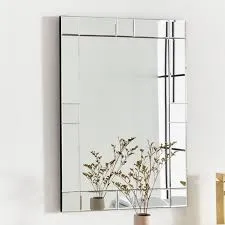

Understanding Low-E SC Glass Benefits and Applications
In the realm of modern architecture and construction, energy efficiency has become a paramount concern. As buildings consume a significant portion of global energy, architects and builders are increasingly turning to innovative materials that can help reduce energy consumption while enhancing comfort. One such innovation is Low-E SC glass, a technologically advanced solution known for its superior thermal insulation and versatility.
What is Low-E SC Glass?
Low-E SC glass, where Low-E stands for low emissivity, refers to a type of glass that has been treated with a special coating. This coating reflects infrared radiation while allowing visible light to pass through. The SC in Low-E SC glass refers to Solar Control, indicating its capability to manage solar heat gain. This unique combination of properties makes Low-E SC glass ideal for a variety of applications, ranging from residential buildings to commercial structures.
The Science Behind Low-E SC Glass
The primary function of Low-E SC glass is to enhance energy efficiency. It achieves this by reducing the amount of heat that escapes from a building during cold months and limiting the amount of heat that enters during warmer months. The Low-E coating is typically applied to one side of the glass, allowing it to effectively reflect heat back into the building in winter while preventing unwanted heat from sunshine in summer.
The technology behind Low-E glass has advanced significantly. Modern Low-E coatings are engineered to maximize solar gain in winter and minimize it in summer. There are two main types of Low-E glass hard coat and soft coat. Hard coat Low-E glass is durable and can be made in single or double glazing, whereas soft coat Low-E glass is more efficient but requires an inert gas fill for optimal performance.
Benefits of Low-E SC Glass
1. Energy Efficiency The most significant advantage of Low-E SC glass is its ability to improve energy efficiency. Buildings that use this type of glass can maintain a comfortable indoor temperature with less reliance on heating and cooling systems. This reduction in energy consumption translates to lower utility bills for homeowners and businesses.
2. UV Protection Low-E SC glass also offers protection from harmful ultraviolet (UV) rays. These rays can cause fading to furniture, carpets, and artwork. By blocking up to 99% of UV radiation, Low-E SC glass helps preserve the interior aesthetics of a building while protecting valuable furnishings.
3. Comfort The thermal control features of Low-E SC glass contribute to a more consistent indoor climate. By minimizing temperature fluctuations, occupants experience increased comfort, whether in residential homes or office buildings.

4. Noise Reduction Many types of Low-E SC glass provide sound insulation benefits, dampening external noise. This is particularly advantageous for buildings located in urban areas or near busy roads.
5. Environmental Impact By reducing the energy consumption of buildings, Low-E SC glass plays a role in decreasing the overall carbon footprint. As more buildings incorporate sustainable practices, the use of Low-E glass aligns with global goals for energy conservation and environmental protection.
Applications of Low-E SC Glass
Low-E SC glass is versatile and can be utilized in a wide range of applications, including
- Residential Windows Homeowners looking to enhance energy efficiency and comfort in their living spaces often choose Low-E SC glass for windows.
- Commercial Buildings Skyscrapers and office buildings benefit from Low-E SC glass to cut down energy costs while providing natural light to workspaces.
- Curtain Walls Many modern architectural designs incorporate curtain walls, and Low-E SC glass is a popular choice for achieving a sleek appearance without sacrificing energy performance.
- Skylights and Sunrooms In areas where natural light is a priority, Low-E SC glass allows for ample sunlight while controlling heat gain.
Conclusion
In summary, Low-E SC glass represents a significant advancement in building materials, combining energy efficiency with aesthetic appeal. As the demand for sustainable building practices continues to grow, the implementation of Low-E SC glass offers a practical solution for architects, builders, and homeowners alike. By understanding and leveraging the benefits of Low-E SC glass, we can move toward more sustainable living and working environments, ultimately contributing to a more energy-efficient future.